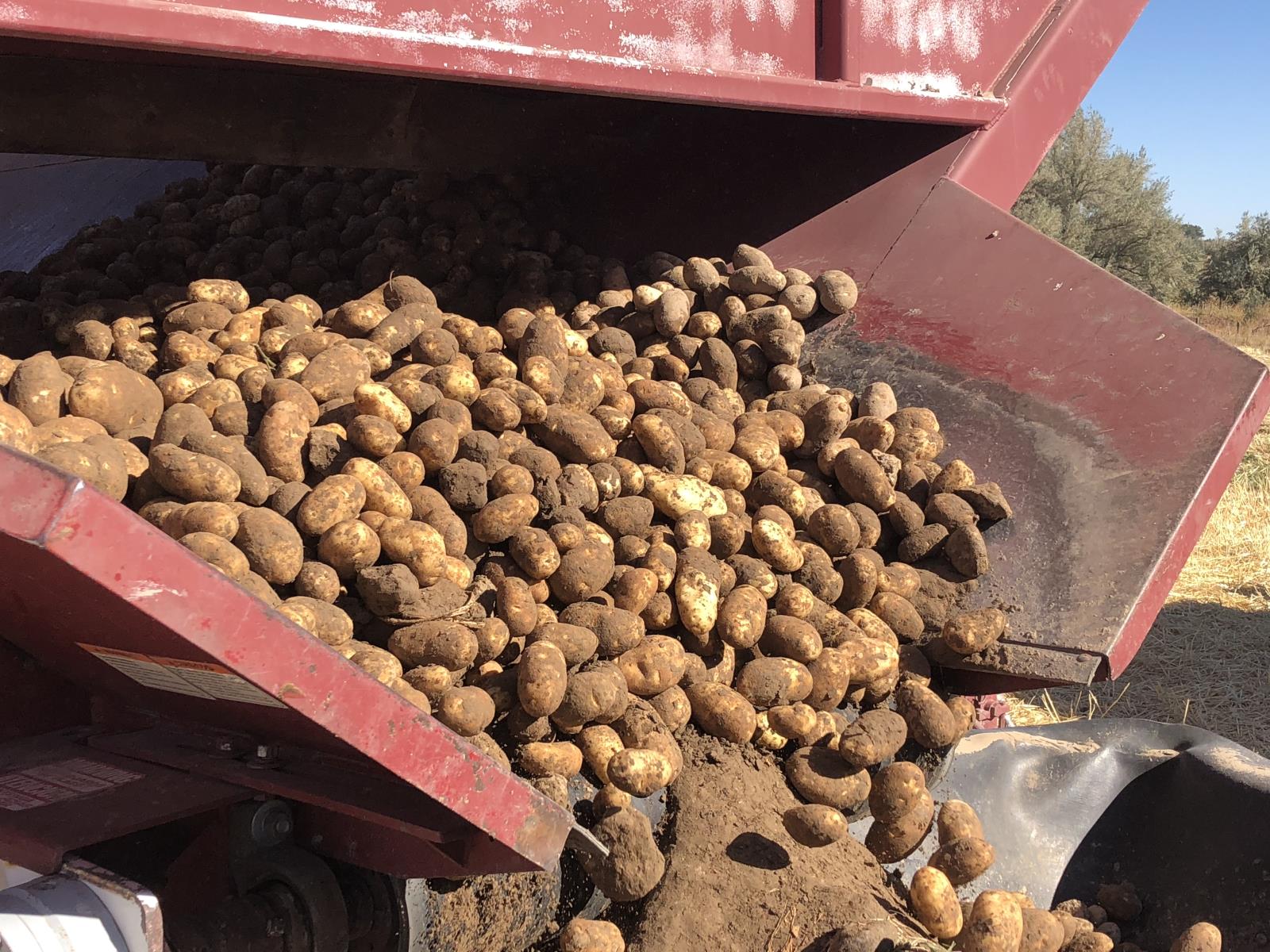Potato leaders seek COVID-19 relief boost, citing 21% price decline

By John O’Connell
Intermountain Farm and Ranch
The COVID-19 pandemic caused U.S. potato prices to drop by about 21% from Jan. 15 through April 15, according to the industry's surveys of potato growers and processors in major potato production areas.
The estimate was included in a June 22 letter to Secretary of Agriculture Sonny Perdue signed by 19 U.S. potato growing organizations, requesting that potatoes be made eligible for the highest payment classification under the Coronavirus Food Assistance Program.
The Idaho Potato Commission, Idaho Grower Shippers Association and National Potato Council were among the signatories.
June 22 was the deadline for farmers, ranchers and commodity group leaders to request changes to the crucial relief program, which has made $16 billion available to help food producers withstand the economic hit of the pandemic.
Kam Quarles, CEO of NPC, which is the potato industry's lobbying arm based in Washington, D.C., told Farm & Ranch he's concerned that funds are already being awarded through the program, and it will be important for changes to be made promptly while there are still dollars available.
Quarles is optimistic, however, that USDA will make the necessary revisions to make the program more equitable for fruits and vegetables, including spuds.
"Way before the initial program rolled out, we were having conversations with USDA," Quarles said. "I think they recognize overall only 2% of these payments are going out to the fruit and vegetable industry, and I think they've got to recognize they've got problems with the program."
According to the letter, USDA relied upon shipping point pricing data to conclude potatoes should receive compensation under the program's Category 3, which pays a penny per pound in relief.
"This payment rate is likely less than it would cost for a grower to responsibly destroy their crop in accordance with environmental requirements," the letter reads. "It also appears to be a payment rate that is not equitable in regard to other commodities with similar production practices."
The potato groups argued shipping point data covers just 6.5% of the overall industry, and the sector largely escaped the negative impacts of the COVID-19 shutdown "as it involves potatoes destined for retail sales."
The retail market has remained strong during the crisis, as people have been buying more groceries to dine at home.
"As we have discussed with USDA at length over the past three months, the threat to family farms in the potato industry due largely to the closure of the food service sector may last well into 2021 if aggressive actions are not taken," the letter reads. "Specifically, over 1.5 billion pounds of fresh potatoes for processing and potato products are trapped in the supply chain with no likely customers."
The groups' calculations included a 43% price drop for potatoes used in frozen products and a 15% price decline for seed potatoes. Furthermore, the letter points out that the funding authorized under the program spans through just April 15, while usage of potatoes for processing declined by nearly 15% during April and May.
In Idaho, data shows processors used 26.5% fewer potatoes during April compared with the same month in 2019, according to the letter.
"That April 15 date, that was when things were just starting to heat up with the crisis," Quarles said.
The groups say some farms will have no ability to sell their 2019 or 2020 crops due to the oversupply.
Many processors have invoked "act of God" clauses in contracts that allow them to invalidate agreements for both last fall's harvest and this season's crop.
"For some growers, this notification came after all or a substantial portion of their crop had already been planted," the letter reads. "In turn, seed potato growers have had all or a portion of their crop returned without payment as their customers respond to the aforementioned reductions."
Export markets have also been hurt, according to the letter. According to estimates included in the letter, U.S. potato exports decreased by more than 222 million pounds in volume and more than $48 million in value during the months of March and April.
"The decrease in exports further increases the impact on the domestic U.S. potato market by injecting more supply into an already oversupplied market," the letter reads.
The U.S. potato industry is responsible for an estimated $4 billion in annual sales.
Even if the market improves, Quarles noted, many farmers had to cut back on their planted potato acreage and wouldn't be able to take advantage of a brightening economy.
"I think Congress is going to have to step in and provide more resources to provide true equitable distribution of these resources," Quarles said.
Still can't find what you are looking for? Find by topic:
- Achievement Award (YF&R)
- Actions Alerts
- Advocacy
- Ag Ambassadors
- American Farm Bureau
- American Farm Bureau Policy Book
- Archive Photos
- Articles
- Board of Directors
- Calendar - State/District
- Calendar - County
- Capitol Reflections
- Collegiate Chapters
- Committee Application Form
- Commodities
- Convention Annual
- County Presidents & Board Information
- County Resource Page
- Delegate Form
- Discount Programs
- Discussion Meet
- Discussion Meet - High School
- Education Programs
- Events
- Excellence Award (YF&R)
- Expense Voucher
- Flickr
- Gem State Producer
- High School Discussion Meet
- High School Speech Contest
- Hope in Idaho Ag
- House of Delegates Credentials Form
- IFBF Board of Directors
- IFBF Policy Book
- IFBF Staff
- Insurance
- Legislative Action Program
- Legislative Issues
- Library
- MAC Trailer
- Magazines
- Map My Benefits
- Member Benefits
- Member Discount
- Membership Application
- Mission Statement
- Moving Agriculture to the Classroom
- Newsletter Sign up
- News Releases
- News Room
- Open Range Law
